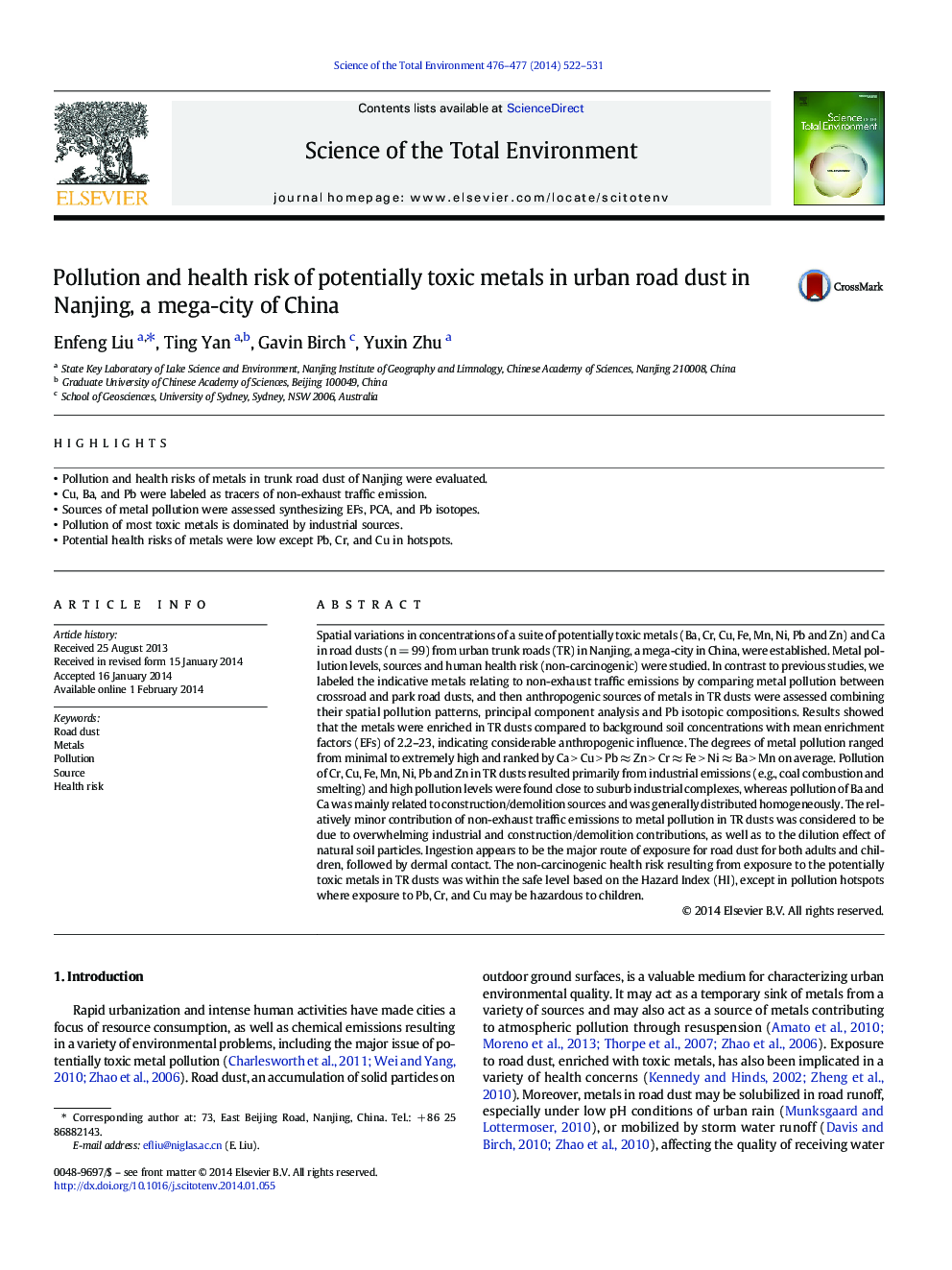| کد مقاله | کد نشریه | سال انتشار | مقاله انگلیسی | نسخه تمام متن |
|---|---|---|---|---|
| 4428567 | 1619789 | 2014 | 10 صفحه PDF | دانلود رایگان |
• Pollution and health risks of metals in trunk road dust of Nanjing were evaluated.
• Cu, Ba, and Pb were labeled as tracers of non-exhaust traffic emission.
• Sources of metal pollution were assessed synthesizing EFs, PCA, and Pb isotopes.
• Pollution of most toxic metals is dominated by industrial sources.
• Potential health risks of metals were low except Pb, Cr, and Cu in hotspots.
Spatial variations in concentrations of a suite of potentially toxic metals (Ba, Cr, Cu, Fe, Mn, Ni, Pb and Zn) and Ca in road dusts (n = 99) from urban trunk roads (TR) in Nanjing, a mega-city in China, were established. Metal pollution levels, sources and human health risk (non-carcinogenic) were studied. In contrast to previous studies, we labeled the indicative metals relating to non-exhaust traffic emissions by comparing metal pollution between crossroad and park road dusts, and then anthropogenic sources of metals in TR dusts were assessed combining their spatial pollution patterns, principal component analysis and Pb isotopic compositions. Results showed that the metals were enriched in TR dusts compared to background soil concentrations with mean enrichment factors (EFs) of 2.2–23, indicating considerable anthropogenic influence. The degrees of metal pollution ranged from minimal to extremely high and ranked by Ca > Cu > Pb ≈ Zn > Cr ≈ Fe > Ni ≈ Ba > Mn on average. Pollution of Cr, Cu, Fe, Mn, Ni, Pb and Zn in TR dusts resulted primarily from industrial emissions (e.g., coal combustion and smelting) and high pollution levels were found close to suburb industrial complexes, whereas pollution of Ba and Ca was mainly related to construction/demolition sources and was generally distributed homogeneously. The relatively minor contribution of non-exhaust traffic emissions to metal pollution in TR dusts was considered to be due to overwhelming industrial and construction/demolition contributions, as well as to the dilution effect of natural soil particles. Ingestion appears to be the major route of exposure for road dust for both adults and children, followed by dermal contact. The non-carcinogenic health risk resulting from exposure to the potentially toxic metals in TR dusts was within the safe level based on the Hazard Index (HI), except in pollution hotspots where exposure to Pb, Cr, and Cu may be hazardous to children.
Journal: Science of The Total Environment - Volumes 476–477, 1 April 2014, Pages 522–531
